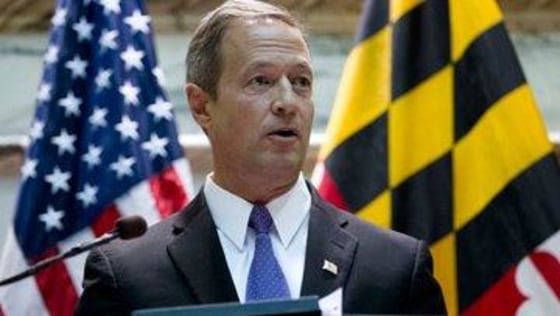An important "Obamacare" pattern is emerging and the political impact should prove to be fascinating in the coming months.
Maryland insurance officials approved final rates Friday for health plans to be sold in the online marketplace for individuals beginning Oct. 1. The rates offered by nine carriers are among the lowest of the 12 states that have proposed or approved rates for comparison and among the lowest in the D.C. area, according to an analysis by Maryland officials who will be operating the state's marketplace.
The Maryland Insurance Administration approved premiums at levels as much as 33 percent below what had been requested. For a 21-year-old non-smoker, for example, options start as low as $93 a month.
Maryland offers an example of the Affordable Care Act working exactly as planned. State officials, led by Gov. Martin O'Malley (D) championed the law and created an exchange. Soon after, insurers lined up to participate, competition brought down costs for consumers, and the marketplace is set to begin on time. The result is great news for state residents: premiums in Maryland will be among the lowest in the country.
And if this sounds kind of familiar, there's a good reason for that -- we recently talked about a similar dynamic in states like New York and California, where the exchanges are in good shape and where consumers are poised to see a sharp reduction in prices.
As Jonathan Cohn explained very well the other day, "The results are perfectly consistent with the pattern we've seen so far. When state officials want the law to work, it works pretty well."
And that's where the political future starts to get interesting.
In recent weeks, there's been a proxy war of sorts when it comes to the projected rates on health care premiums. A "blue" state like New York will announce great news, which leads a "red" state like Indiana to announce poor news. Democratic officials in California say residents are going to going to have more money in their pockets thanks to the Affordable Care Act, to which Republican officials in Ohio say the opposite.
The pattern isn't exactly subtle: if you live in a state where officials want "Obamacare" to work, the law looks great. If you live in a state where officials are actively trying to undermine the law, regardless of what it does to you, your premiums, and your family's access to quality and affordable care, then -- you guessed it -- the news isn't as encouraging.
Now, some of this is the result of silly gamesmanship. In Indiana, for example, premiums aren't really set to spike -- it only looked that way because GOP officials in the state cooked the books to get a more politically convenient result. For that matter, if the feds can meet their deadlines, they'll hopefully run the exchanges in obstinate states pretty well, too.
In other words, even folks in ruby-red states are poised to benefit greatly, whether their elected state officials want them to or not.
That said, the emerging pattern nevertheless suggests folks in states like Maryland, New York, California, and other bluer-than-blue states are going to be immediately happier with the results of the federal health care law because they're living in states where officials actually want the system to work effectively.
My question is, what happens in those red states when residents start looking across borders and they wonder to themselves, "Why aren't my benefits as great as theirs?" In theory, this should prompt those folks to start asking their state officials to do more of what works.
And this in turn might create an interesting political situation for red-state Republicans who want to listen to their constituents but who also want to undermine the health care law out of partisan spite.
